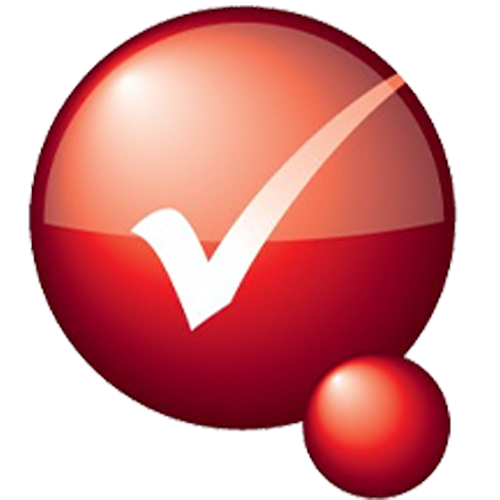If you need additional help or information please don’t hesitate to email or call us.
What is a Management System and why should I have one?
A management system is the way in which an organisation manages the interrelated parts of its business in order to achieve its objectives. These objectives relate to a number of different topics - depending on the organisation goals and industry. These include quality, environmental business, health and safety and many more.
ISO management system standards (MSS) help organisations improve their performance by specifying repeatable steps that organisations consciously implement to achieve their goals and objectives and to create a culture that reflexively engages in a continuous cycle of analysis, correction and improvement of operations and procedures through employee awareness and management leadership and commitment.
Management systems ensure that your organisation:
Complies with your customers expectations and requirements,
Complies with government regulations and standards,
Is protected through embedding quality and instituting best practices,
Grows, extending the customer reach and satisfaction - therefore increasing profits.
Click the below button to learn more about management systems and how QSG can help you.
What is a Respirator Fit Test and why is it important?
At QSolutions Group we use quantitative fit test to fit-test any tight fitting respirator. It involves using an instrument to measure leakage around the face seal and produces a numerical result called a “fit factor”. We have an advanced measuring machine called a PortaCount that counts the particles outside the mask and measures it against the particles inside the mask, which is what produces the fit factor.
A fit factor of at least 100 is required for half-mask respirators and a minimum of 500/1000 for a full facepiece respirator depending on what the respirator is being used for e.g. asbestos, silica.
Many people do not see the point in a respirator fit test, because the consequences of a poor fit do not arise instantly - this is most likely because they are not educated on the history of the subject. From the 1920s-1970s thousands miners who worked in asbestos mills without respirators and a very large percentage of them died prematurely from lung diseases or cancer. This is why a fit test is so important, QSolutions Group does fit tests at our office or on-site, we also offer a wide range of different respirator kits.
Click the button below to learn more about RFT testing, or book one today!
What is a PCBUs obligations in relation to their workers?
A person conducting a business or undertaking (PCBU) has a primary duty of care to ensure the health and safety of workers while they are at work in the business or undertaking and others who may be affected by the carrying out of work, such as visitors.
The primary duty of care requires PCBUs to ensure so far as is reasonably practicable the:
provision and maintenance of a safe work environment;
provision and maintenance of safe plant and structures;
provision and maintenance of safe systems of work;
safe use, handling and storage of plant, structures and substances;
provision of accessible and adequate facilities (for example access to washrooms, lockers and dining areas);
provision of any instruction, training, information and supervision;
monitoring of workers health and conditions at the workplace and
maintenance of any accommodation owned or under their management and control to ensure the health and safety of workers occupying the premises.
What is a the Certified Professional in Erosion and Sediment Control (CPESC) Certification?
The public demands evidence of professional competence from persons whose activities affect the physical and economical well being of people throughout the world. Such professionals increasingly must be able to show evidence of their qualifications. Envirocert International Inc. certifies individuals based on thorough examination and review of an individual’s educational, scientific and service activities in both the public and private sector. Envirocert International Inc.. has developed standards and procedures for certifying persons qualified to practice in the fields of erosion and sediment control.
Individuals who demonstrate an established minimal level of competence through the application review process and an examination process will be certified in erosion and sediment control by Envirocert International Inc.. This certification program is based upon scholarly preparation knowledge and experience. Certified professionals listed on the registry will:
meet the educational and practical experience standards,
subscribe to the code of ethics,
qualify for particular identification of special abilities, and
pass a qualifying examination.
The CPESC program started in the United States and is administered by IECA Australasia in Australia and New Zealand. An Australasian CPESC committee has developed the program to reflect Australian and New Zealand needs. This has occurred in close consultation with the Envirocert International Inc. Executive Committee in the USA that provides oversight for the program. The committee has made sure that the version of the program available here properly represents Australian and New Zealand needs.
Initially the CPESC program offered certification only to those involved in development of urban lands. However, the CPESC Committee has developed exams to expand the program to cover other forms of development including, highways and agricultural lands.
At QSolutions Group, we have a certified professional in erosion and sediment control, so we can assist you in your project planning needs.
Click the button below to learn more about the CPESC certification.
What is a Safe Work Method Statement (SWMS)?
If you carry out high risk construction work, you must ensure a safe work method statement (SWMS) is prepared before work commences. If you employ a principal contractor, they must take all reasonable steps to get a copy of the SWMS before the work commences.
Take into account all relevant matters, including circumstances that may affect the work and work health and safety management plans that may be prepared in connection with a construction project.
If the SWMS is not followed, stop work immediately and only recommence when the statement can be followed.
The SWMS must be understandable to those who use it and should outline:
the work involved
the hazards and risks
the control measures and how they will be implemented, monitored and reviewed
Give a copy of the SWMS to the principal contractor before the work commences. Keep a copy available for inspection and readily accessible to workers until the work is completed, or for at least two years if there is a notifiable incident.
The SWMS must be reviewed and, if necessary, revised when control measures are changed after a notifiable incident.
What it contains
There are 19 specific activities defined as high risk construction work (HRCW). This document advises employers and self-employed people how to prepare a safe work method statement (SWMS) for these activities to ensure workers’ safety on construction sites. It explains:
which 19 activities are classed as HRCW
what is a SWMS
who is responsible for preparing a SWMS
what an SWMS must include and how it should be stored
how to reduce or eliminate risks for HRCW
additional duties related to SWMS
Click the button below to learn more about the SWMS, and how we can help you.
Why should my business be certified with JAS-ANZ certifications such as ISO & AS?
JAS-ANZ accreditation is internationally recognised. It is the symbol of assurance for your customers/clients and offers many benefits.
By being certified with JAS-ANZ accreditations, you can:
Highlight your competence and credibility,
Confirm you are independent and impartial,
Give you international recognition with the international accreditation organisations JAS-ANZ has arrangements with,
Enable your business to benchmark ongoing performance with relevant standards,
Inform your clients you have met the highest level of assessment and professionalism in the industry,
Flag your ability to meet mandatory regulatory requirements,
Strengthen your ability to compete overall.
Accreditation throughout the market chain is increasingly important. The business world we live in is growing quickly and is highly complex with many inspectors and certifiers operating without accreditation. This is risky for all players, right through to the ultimate consumer.
Without accreditation there is no certainty that goods and services can be depended upon. On the other hand, accreditation provides certainty in a world where standardisation and certification are an integral part of the global economy. And it supports trade and commerce.
JAS-ANZ offers accreditation for these themes to support government, industry and the community to achieve their goals:
business and innovation,
health and human services,
product certification,
food and biological systems,
environment.
QSolutions Group can help you get certified, and provide management plans and systems that comply with an array of ISO certifications.
Click the button below to learn more about our quality services.
What will poor safety practice cost my business?
Prioritising Health and Safety has a multitude of different advantages for your business, and not dedicating the required time and resources into Health and Safety will make your business less profitable. But how does it do this? Because of the direct costs and the hidden costs.
What are the direct costs?
Direct costs of a workplace accident or incident are measurable costs that can be added up by a business following the incident. Some of these include;
Legal fines
Compensation
Paying out to replace or repair damaged equipment and property
Sick pay
Employment cover
Other legal costs
The hidden costs
Hidden costs refer to longer term impacts on the business due to unsafe work environments, even before an accident or incident occurs. According to NSC, indirect costs are $2.12 for every $1 spent on direct costs. Some of these hidden costs include;
Delays of projects and schedules
Equipment damage
Investigation of actions and implementation to correct them
Cost of other government benefits required by injured workers
Loss of skilled workers
Loss of reputation
A hit to reputation due to an incident can lead to a loss of both existing and new customers, clients, investors and partners. While news of an incident can quickly spread amongst the industry, the media are also likely to pick up the story, reaching an even wider audience and painting the business in a poor light.
Not only can the PR costs to rectify the situation be huge, but in many cases the damage is already done. Existing clients and partners are unlikely to want to associate themselves with your business and potential clients will simply look elsewhere.
A poor safety record will also make it difficult to hire quality staff who expect a certain level of care from the company they work for.
At QSolutions Group, we can help remove the chance of this happening by ensuring your company is compliant with their legal and moral responsibilities by putting health and safety processes and procedures in place.
Learn more about our health and safety services by clicking the button below.
What is the difference between a hazard and a risk?
Two important terms in relation to Health and Safety are hazards and risks. It is very important to differentiate these two terms because they mean very different things.
A hazard is a situation or thing that has the potential to harm a person or worker. Hazards may include: noisy machinery, a moving forklift, chemicals, electricity, working heights or a repetitive job at your workplace.
A risk is the possibility that harm (death, illness or injury) might occur when exposed to a hazard in your workplace.
QSolutions Group can provide a range of different services related to risks and hazards, such as hazard registers, safe work method statements, risk registers, risk assessment and many more. Contact us today or press the button below to learn more about what we can offer regarding to your workplaces health and safety.
Are training records important in complying with legislation?
It is extremely important for businesses to train their employees correctly to ensure quality products/services and safe work procedures - if not then it can be very bad for your business and for your clients. But even if your employees are trained, you need the relevant documents to prove your employees are trained.
If an employee of yours gets hurt because he/she is not trained, e.g. falling from height when they are not trained properly, you are legally liable for that person and you will need to pay compensation. It would be the same even if he/she was trained, unless you had the required documents to prove they are trained.
A business must have training records to ensure that they are proving that their workers are trained for the specific works they are doing. At QSolutions Group our management systems include a range of different documents that proves what training records they have aligned to the workers and their competencies - such as an Training Needs Analysis Matrix, Competency Matrix, Training registers etc.
We can help you with your training requirements, just enquire about it today.
What are the differences between legislation, code of practice, regulation and standards?
There are distinct differences between legislation, codes of practice, regulations and standards - some are legally binding, some aren’t, some apply to everyone, some don’t.
Legislation is law which has been publicised by government or legislature, this is legally binding and applies to everyone.
Codes of practice are practical guides on how to comply with the legal duties under the Work Health and Safety Act/Regulations - technically they are not legally binding in the same way of statutory law. Codes of practice are often used in law suits to prove negligence of the opposite party. For your business to be compliant you should be following these codes of practice.
Regulations are rules made by the government, it is expected that your business comply to these regulations as they are legally enforceable.
Standards are voluntary documents that set out specifications, procedures and guidelines that aim to ensure products, services and systems are safe, consistent and reliable. They cover a variety of subjects, including products, services, environment, construction, energy and water utilities and more. Standards are regularly reviewed and amended to keep up with new technologies and global affairs e.g. COVID-19.
Learn more about how we can help you with your legal obligations by clicking the below button.
What is a tender and what is it for?
A tender is an offer to perform some task or to supply goods at a fixed price. The contractors will be invited to submit sealed bids for construction or for the provision of specifically designed services or goods during a particular time frame in the initial step of this tender process. At QSolutions Group we offer tender writing so you can get the best chance of winning the tender.
Learn more about our tender writing services by clicking the button below.
What are service maintenance contracts?
A service maintenance contract is defined as the contract between 2 parties that creates the agreement that one party will maintain an asset owned by another party. At QSolutions Group we manage your service maintenance contracts for HSEQ management systems which may include on-site HSEQ Management to ensure your company meets the current legislation and remains complaint, learn more about it today by clicking the button below.
Is Drug and Alcohol testing a legal requirement?
Drug and alcohol testing varies among businesses, it is illegal to have drugs or alcohol in your system as both a worker and employer, but it depends on your organisations Drug & Alcohol policy to determine when or how often you can drug test your workers. If an employer believes that one of their workers is using drug or alcohol during work, they have the right (depending on your policy) to drug-test them, your policy will state how often you can drug test, how many times you can and how long in between drug tests you must leave.
Your employee has the right to decline a drug test, but you can speak to the fair work commission and and that declination can serve as grounds for dismissal. Therefore your workplace drug and alcohol policy should state what happens in the event that an employee declines a drug or alcohol test.
QSolutions Group offers specific policies for almost anything you require - including drug and alcohol in the workplace, and we can custom make policies for you if we don’t have everything. Learn more about how we can offer you policy management by clicking the button below.
What is continual improvement?
Continual improvement is a very important process, it is an ongoing effort to improve products, services or processes. Usually they use the PDCA cycle. Learn more using the diagram below.
We have an entire blog about continual improvement, click on the link below to learn more.
Think we have missed something or need some extra help?



